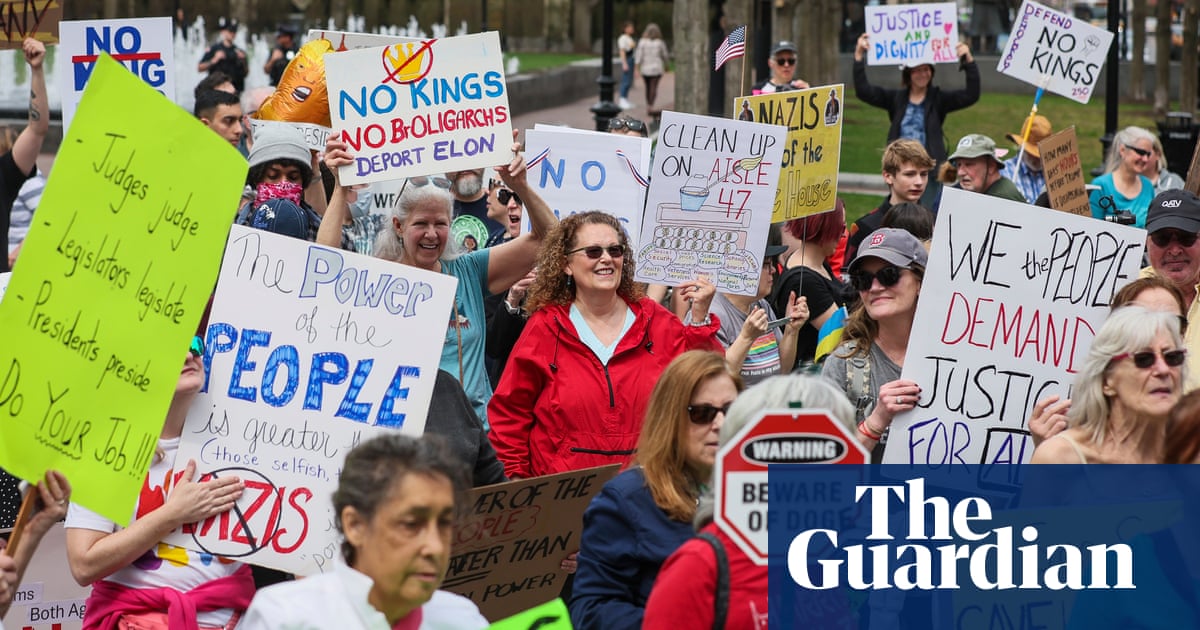As tanks and soldiers parade through the streets of Washington on Saturday, millions of people around the countryare expected to turn outin their communities to speak out against the excesses of Donald Trump’s administration in what’s expected to be the biggest day of protest since his second term began.
The protests, dubbed “No Kings”, are set to take place throughout Saturday inabout 2,000 sitesnationwide, from big cities to small towns. Acoalitionof more than 100 groups have joined to plan the protests, which are committed to a principle of nonviolence.
This week, Trump has deployed national guard and US marine troops to Los Angeles to crack down on protesters who have demonstrated against his ramped-up deportations, defying state and local authorities in a show of military force that hasn’t been seen in the US since the civil rights era. Interest in the Saturday protests has risen as a result, organizers said.
Texas governor Greg Abbott, a Republican,deployedhis state’s national guard to manage protests ahead of No Kings and amid ongoing demonstrations against Trump’s immigration agenda. In Florida, Republican governor Ron DeSantissaidthat people could legally run over protesters with their cars if they were surrounded. “You don’t have to sit there and just be a sitting duck and let the mob grab you out of your car and drag you through the streets. You have a right to defend yourself in Florida,” he said.
A website for the protest cites Trump’s defying of the courts, mass deportations, attacks on civil rights and slashing of services as reasons for the protests, saying: “The corruption has gone too far. No thrones. No crowns. No kings.”
The coalition will not hold a protest in Washington DC – an intentional choice to draw contrast with the military parade and to not give the president an excuse to crack down on peaceful protest. Philadelphia will host a flagship march instead, and a DC-based organization is hosting a “DC Joy Day” in the district that will “celebrate DC’s people, culture, and our connections to one another”.
Trump initially said people who protested the parade would be met with “very big force”, though the White House then attempted to clarify he was fine with peaceful protest. Asked about the No Kings protests during a White House event on Thursday, Trump said: “I don’t feel like a king. I have to go through hell to get things approved.”
Since the start of his second term, opposition to Trump has grown, manifesting in protests and demonstrations including against Elon Musk at his car company, against deportations, around his retribution agenda and government cuts.
Harvard’s Crowd Counting Consortium, which tracks political crowds,foundthat there had been three times as many protests by the end of March 2025 compared to 2017, during Trump’s first term, and that was before major protests in April and May. The biggest day of protest so far came on April 5, with “Hands Off”, which the consortium estimated drew as many as 1.5 million people, a lower figure than organizers cited.
“Overall, 2017’s numbers pale in comparison to the scale and scope of mobilization in 2025 – a fact often unnoticed in the public discourse about the response to Trump’s actions,” a new analysis from the consortium said.
